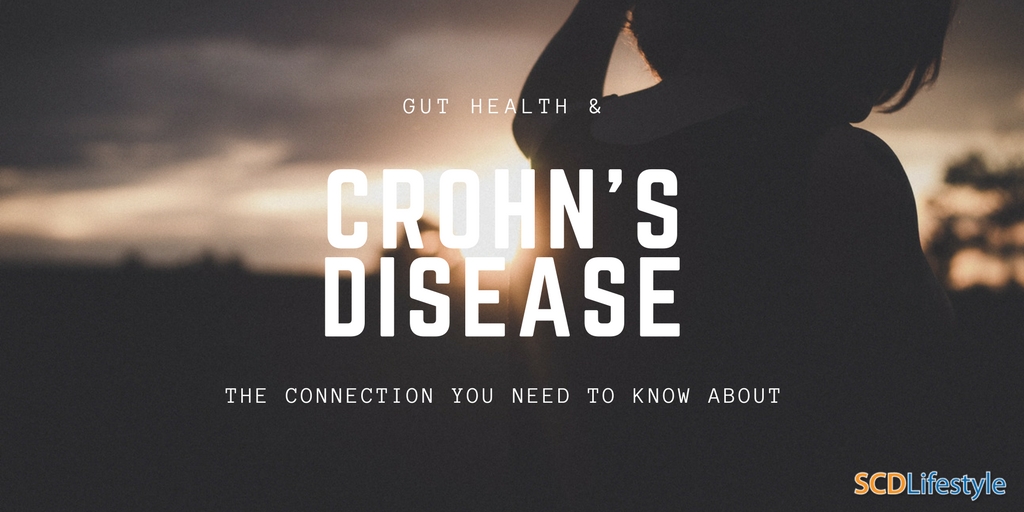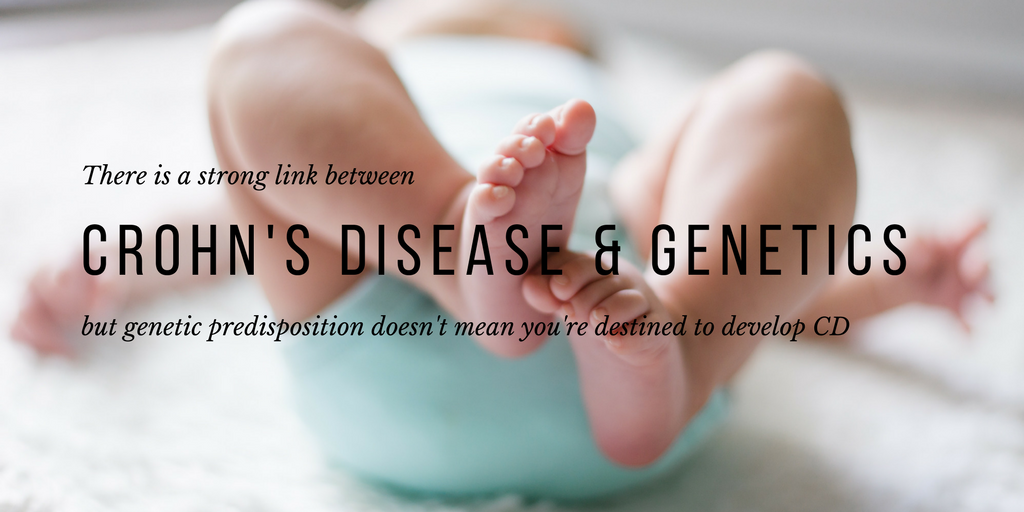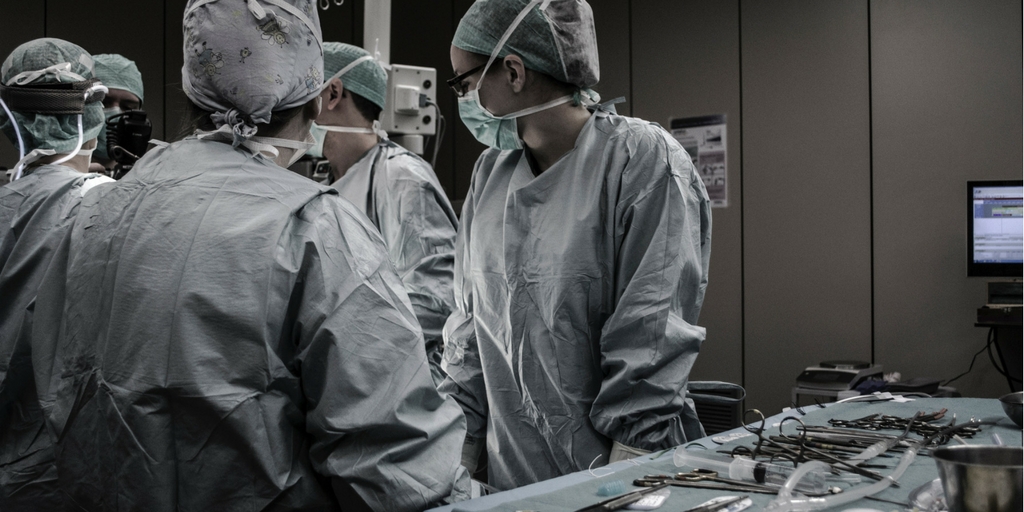How To Overcome Crohn’s Disease Naturally


The physical complications of Crohn’s disease alone are enough to make it one of the most disabling digestive diseases.
But there’s also the mental and emotional piece that allows Crohn’s to completely destroy lives.
Anxiety, depression, the inability to have a social life or travel… the list goes on.
Those with Crohn’s disease are 2 times more likely to suffer from anxiety. And that number is rising.
But here’s the thing – you don’t have to pull your hair out trying to treat the mental and physical symptoms separately.
Our microbiome has just as much to do with our emotional state as it does with the gas, cramping and bloating that come along with Crohn’s.
Read on, as we dive into all the details of Crohn’s disease and walk you through how to overcome this disabling condition (without medication or surgery).
What Is Crohn’s Disease?
Crohn’s disease (CD) is classified as an inflammatory bowel disease (IBD) and is characterized by inflammation that can appear anywhere along the digestive tract. Most commonly, the inflammation is seen in the distal part of the small intestine (ileum) and the colon.
There are 5 types of Crohn’s, each named based on the exact location of the inflammation: Ileocolitis, Gastroduodenal, Jejunoileitis, Crohn’s Colitis and Ileitis.
Crohn’s disease affects everyone differently, as it depends on where the inflammation is and how severe it is. The disease can change quickly – going from active to a state of remission and back again at any given time.
Those with active Crohn’s will likely experience:
- Diarrhea and loose stools
- Blood in the stool
- Gas, cramping and bloating
- Fever
- Fatigue
- Nausea and vomiting
- Reduced appetite and/or weight loss
Nearly 3 million Americans suffer from inflammatory bowel disease and over 700,000 of those have Crohn’s disease. The typical age of diagnosis is between the ages of 15 and 30.
Diagnosing Crohn’s Disease
The following tools are used to confirm a clinical diagnosis:
- Physical Exam and Health History – These are standard initial procedures used to gather information on the frequency and severity of diarrhea, whether there is a family history of IBD, pain and tenderness in the abdomen area (which may signal changes to the spleen and liver), and if a fever is present.
- Stool Tests – A stool test can help rule out other possible causes of your symptoms, such as bacterial or parasitic infections. The stool can also be examined for anti-Saccharomyces cerevisiae antibody (ASCA), a known biomarker of CD.
- Barium X-Ray – This technique includes ingesting barium fluid, a white substance which will show up on an x-ray film. As the fluid flows through the intestines, the doctor can see where the inflammation is as well as how severe it is. This test also allows for the detection of fistulas, defined by narrowing of the intestinal canal and ulcers.
- Colonoscopy – A colonoscopy is the most important tool in diagnosing Crohn’s disease. This common procedure allows the large intestine to be viewed directly and can provide the most accurate amount of information about the colon, such as the presence of inflammation, ulcers or bleeding.
- Biopsy – A biopsy is a procedure in which a small sample of tissue from the gut is viewed under a microscope. The tissue is then examined for microscopic changes related to Crohn’s disease, such as thickened submucosa, transmural inflammation (across the entire tissue) and ulcerating fissures.
Complications Associated with Crohn’s Disease
The deep-rooted inflammation of Crohn’s disease is likely to blame for the physical complications of CD. The most common complications are:
Abscess – Chronic inflammation leads to scar tissue, making it difficult for food and waste to pass through the digestive tract. An inflamed mass of tissue is formed as the body attempts to keep any infections from spreading.
Fistulas – Abnormal connections formed between the intestines and other organs (i.e skin). Fistulas allow waste material to end up in places it shouldn’t be, leading to possible infections and more abscesses to contain the material.
Malnutrition – The ileum is where B12, other vitamins, bile salts and any left over nutrients are absorbed. Chronic inflammation of the ileum can impede the nutrient absorption process and since most develop Crohn’s disease in the ileum, malnutrition is common. Studies show that up to 85% of CD cases suffer from malnutrition, specifically Vitamin D and iron. Low stomach acid is also common in those with Crohn’s and can also contribute to malnutrition.
Strictures – A narrowing of the intestinal canal that can lead to a full blockage.
Anal fissures – A tear near the end of the anus, which is often very painful.
Colorectal Cancer – Long-term inflammation in the GI tract is thought to alter the tumor suppressor protein called p53, which limits its ability to suppress cancer cells. Polyps, a long history of CD, and a family history of colorectal cancer can increase the risk of colorectal cancer. Routine checkups and frequent colonoscopies are advised to stay on top of the risk of cancer.
Psychological Comorbidities – Not only are the complications physical, but mental as well. Abnormal anxiety levels are found in up to 40% of patients with IBD. Not only do depression, psychological stress and anxiety impede quality of life, but they can also trigger a relapse. Some physicians suggest that addressing the psychological symptoms of Crohn’s disease is just as important as treating the physical symptoms.
Researchers estimate 50% of people will experience complications 5 years post diagnosis, and by 10 years that number can jump to 70%. Those staggering statistics make it all the more important to figure out the cause of Crohn’s Disease.
What Causes Crohn’s Disease?

The exact cause of Crohn’s Disease is not yet fully understood. What we do know is CD is a complex autoimmune disease that results from the interaction between the immune system, genetics, gut bacteria, and the environment.
5 – 20% of affected individuals have a first degree relative with an inflammatory bowel disease. Genetic variations on chromosome 5 and chromosome 10 have also been detected, although more research is needed in this area.
Perhaps the most notable is the NOD2 gene, which is associated with an increased susceptibility to CD. Alterations to this gene are thought to decrease the ability of intestinal cells to respond to bacteria, which causes the immune system to mount an abnormal response to bacterial pathogens in the gut.
This abnormal immune response is what defines autoimmunity and eventually leads to the most classic sign of Crohn’s disease: chronic inflammation in the digestive tract.
If Crohn’s disease is the result of disturbed interaction between the immune system and gut bacteria in those with the right genes…
Why doesn’t everyone with the “right genes“ develop Crohn’s disease?
Contributing Factors to Crohn’s Disease
If you’re genetically susceptible to Crohn’s disease, the following factors can turn those genes on or off:
- Smoking – Smoking not only negatively affects those with Crohn’s disease, but it increases the risk of developing it as well. Those who smoke were more likely to experience relapses and need repeat surgeries, as compared to non-smokers.
- Diet/Leaky Gut – Poor dietary habits can lead to an imbalance of bacteria in the gut (dysbiosis), which can result in a damaged or leaky gut. Researchers have confirmed that increased intestinal permeability (leaky gut) can be detected before the onset of mucosal inflammation, which helps explain why some experts refer to IBD as an “impaired barrier disease.”
- Antibiotics – Antibiotics are known to alter the gut microbiome and can interfere with the body’s ability to handle diverse bacteria. One study of 587 Crohn’s sufferers showed that antibiotic use occurred in 71% of those cases 2-5 years before the diagnosis was confirmed.
- Stress – In the 1950s, IBD was classified as a psychosomatic disorder because of it’s strong association to mood, stress, and other psychiatric factors. Recent studies show prolonged, chronic stress can depress the immune system and increase inflammation in the body. Anecdotal evidence also reports stress to be one of the main causes of a relapse.
- Location – Studies show that minimal sunlight exposure (northern climate) is associated with a higher incidence of Crohn’s disease.
Bacterial and Fungal Infections – Fuel for Crohn’s Disease?
Trillions of bacteria live in the gut, and in a perfect world they all remain in balance (symbiosis). A balanced gut is a healthy gut – inflammation and disease are kept at bay.
But when this balance is disturbed (dysbiosis), due to things like poor diet and antibiotics, bacteria and fungi are given the opportunity to take over and wreak havoc on the body.
Researchers have discovered the following fungi and bacteria play a role in CD:
- Candida tropicalis – This is a fungus which is part of our natural mycobiome, or fungal family. In a recent one-of-a-kind study, this fungus was positively correlated with Crohn’s disease and identified as a possible trigger for Crohn’s disease. Researchers also found C. tropicalis to be correlated with the level of anti-Saccharomyces cerevisiae antibodies (as previously stated, a known CD biomarker).This newly detected fungus is part of a trio including the bacterium E. coli and Serratia marcescens. All three work together to form a biofilm, which can attach to the intestinal wall, initiate inflammation and ultimately contribute to the symptoms of Crohn’s disease.
- Mycobacterium avium paratuberculosis (MAP) – One of the biggest breakthroughs in Crohn’s disease research is the discovery of the MAP bacteria. Several studies were able to find a positive correlation between this bacteria and CD, and one in particular detected MAP in 46% of Crohn’s disease cases (as compared to 20% in the control group).MAP is extremely small and sometimes elusive to the immune system. It has the ability to shed it’s outer layer, making it difficult to fight. It’s also known to cause a chronic disease in cattle known as Johne’s (“Yo-knee’s”) disease and is easily transferred from cattle to humans via raw milk and contaminated/poorly prepared meat.
So what does this mean? It means that bacteria and fungi, if given the opportunity, can help trigger Crohn’s disease. Our job is to take away that opportunity.
Stool tests can help determine how balanced your gut is, while probiotics and a gut-friendly diet can help heal the gut (and ultimately turn off the autoimmune process involved in CD).
The Leaky Gut – Autoimmune Connection
If you’ve been keeping up with our autoimmune series articles, you already know it’s nearly impossible to ignore a leaky gut as part of the cause and solution to autoimmunity.
Alessio Fasano, M.D. has been on the forefront of recent autoimmune disease research and published a paper titled “Leaky Gut and Autoimmune Diseases.”
His findings present the idea that in order for an autoimmune condition to develop, 3 conditions must all exist together:
- A genetic predisposition to autoimmunity (i.e. NOD2 gene)
- An exposure to the environmental trigger (i.e. smoking)
- Increased intestinal permeability (a.k.a. Leaky Gut Syndrome)
Another expert summarized the connection this way:
“Leaky gut syndrome is almost always associated with autoimmune disease. In fact, reversing symptoms of autoimmune disease depends on healing the lining of the gastrointestinal tract. Any other treatment is just symptom suppression.” – Dr. Jill Carnahan, MD
The good news? Healing a leaky gut is one factor that’s in our control and, beyond that, it can be done with the right plan.
Unfortunately, the large majority of mainstream medical doctors are stuck in a “symptom management” approach and are hesitant to accept the role the gut plays in autoimmunity.
Conventional Medicine for Crohn’s Disease

The main goal in conventional treatment for Crohn’s disease is to achieve a state of remission (where the disease is no longer active).
The most common treatments include:
Aminosalicylates or 5-ASAs – These are a specific type of anti-inflammatory drug that work to decrease inflammation in the digestive tract. Several studies show 5-ASA’s are effective in achieving remission, but not as effective for maintaining it.
Corticosteroids – Corticosteroids work to decrease acute inflammation and are often used when other treatments are not effective. Because of the long list of dangerous side effects, they’re often given in small doses for short periods of time.
Antibiotics – Antibiotics are used to address the complications of fistulas and abscesses, as well as reduce harmful intestinal bacteria that may play a role in activating CD. The most common antibiotics include Cipro and Flagyl. The role antibiotics play in altering gut bacteria, however, is clear and long-term use of antibiotics can often make things worse.
Surgery – Surgery is recommended when the medications are no longer effective and the risk of cancer is high. The most common types are a strictureplasty to widen the narrow areas, a small bowel resection to remove strictures, and a fistulotomy to address anal fistulas.
Do you notice a common theme here?
Each of the treatments above are effective (to some degree or another) when it comes to symptom management and short-term remission…..
But what about maintaining remission?
How to Turn Off Autoimmune Disease

Maintaining remission requires getting to the root of the issue, and that is exactly what we’re here to help you do.
Hippocrates, the famous Greek physician, stated “all disease begins in the gut,” and some 2,000 years later Fasano and many experts agree.
Ancient and current wisdom both suggest that powerful healing must begin in the gut.
We’ve hosted a free webinar called, “How to Turn Off Your Autoimmunity and Restore a Healthy Immune System.”
It’s completely free, and we walk you through how to address the health of your gut so that your immune system can stop attacking itself.
The topic of autoimmunity is complicated and the amount of information out there can be overwhelming. That’s why we’ve done the work for you and are grateful to support you on this journey.
– Steve
P.S. – Don’t worry if you can’t attend live, we’ll send you a free replay the next day.
P.S.S – What is holding you back from healing? Let us know in the comments below 🙂
Did You Like this Article?
Subscribe to our newsletter to receive email notifications, some ways to find relief, and next steps.
